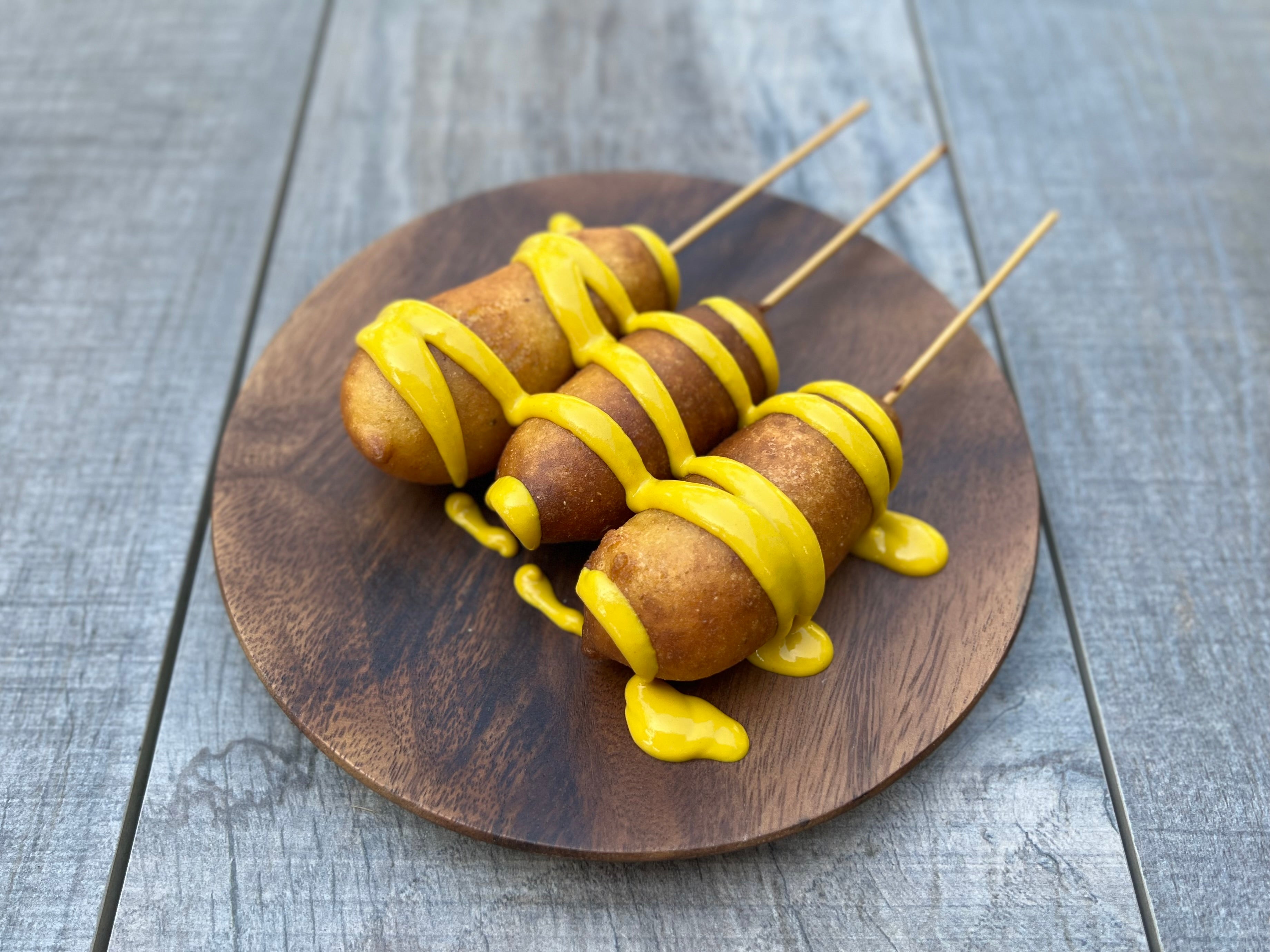Corn dogs, a beloved American snack, are synonymous with state fairs, carnivals, and summertime festivities. This deep-fried delight, consisting of a hot dog coated in a cornmeal batter and served on a stick, has a rich and varied history that reflects its journey from novelty food to a cultural icon. Let's dive into the fascinating story behind the corn dog.
Origins and Early Beginnings
The exact origins of the corn dog are a subject of debate, with multiple claims to its invention. However, it is widely agreed that the concept of encasing a sausage in a bread-like coating dates back to the early 20th century. The idea likely evolved from various culinary traditions, including German sausages and American cornmeal batter.
One of the earliest references to a precursor of the corn dog can be found in a 1929 patent filed by Stanley S. Jenkins of Buffalo, New York. Jenkins' patent described a process for dipping sausages in a batter and deep-frying them, although it is unclear if he ever commercially produced the product.
State Fair Sensation
The modern corn dog as we know it today gained widespread popularity at state fairs and carnivals across the United States during the 1940s. Two key players in the popularization of corn dogs were Carl and Neil Fletcher, who introduced the "Corny Dog" at the Texas State Fair in Dallas in 1942. Their version featured a frankfurter on a stick, coated in a cornmeal batter and deep-fried to perfection. The Fletcher brothers' creation was an instant hit, and it remains a staple at the Texas State Fair to this day.
Another significant contribution came from Pronto Pup, a company that began selling its version of the corn dog at the Minnesota State Fair in 1941. Pronto Pup's innovation was using a pancake-like batter instead of the traditional cornmeal, offering a slightly different texture and flavor profile. The Pronto Pup also quickly became a fairground favorite and helped cement the corn dog's place in American food culture.
Commercial Expansion
Following their success at state fairs, corn dogs began to appear in various commercial settings, including drive-ins, diners, and fast-food restaurants. The convenience of the corn dog, with its portable and easy-to-eat format, made it a popular choice for on-the-go consumers.
In the 1950s and 1960s, companies like Foster Farms and State Fair Foods started mass-producing frozen corn dogs for retail distribution, making it possible for families to enjoy this tasty treat at home. The availability of frozen corn dogs further propelled their popularity, and they became a staple in American households.
Global Influence
While corn dogs are quintessentially American, their appeal has transcended borders. Variations of the corn dog can be found in many countries, each adding its unique twist to the classic recipe. In Japan, for instance, the corn dog is known as "American Dog" and often features a sweeter batter. South Korea has also embraced the corn dog, with innovative versions that include fillings like mozzarella cheese and coatings such as crushed potatoes or ramen noodles.
Corn Dogs Today
Today, corn dogs remain a beloved snack, enjoyed by people of all ages. They are a fixture at fairs, amusement parks, and sporting events, and continue to evoke nostalgia and a sense of fun. In recent years, the corn dog has even seen a resurgence in gourmet circles, with chefs experimenting with high-quality sausages, artisanal batters, and creative toppings.
The history of the corn dog is a testament to the power of simple, delicious food to capture the hearts and taste buds of people across generations. From its humble beginnings to its status as a global snack sensation, the corn dog remains an enduring symbol of American culinary creativity and a beloved treat for all. Whether enjoyed at a bustling state fair or in the comfort of your own home, the corn dog continues to be a delightful and iconic part of our food culture.
Crazy for Corn Dogs


